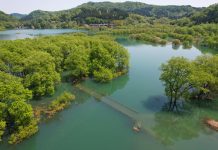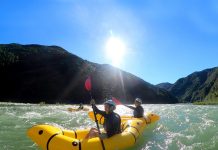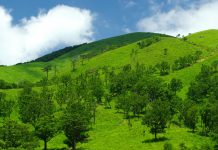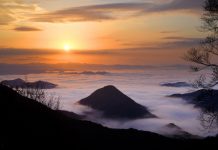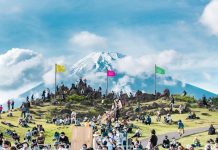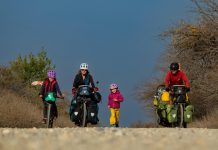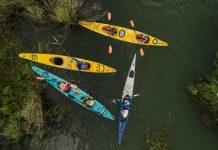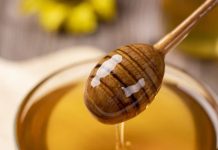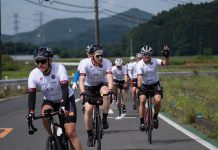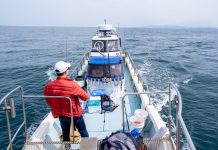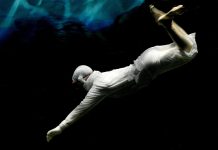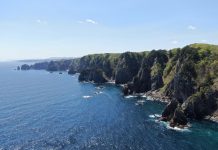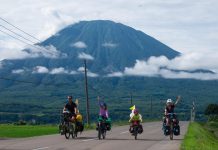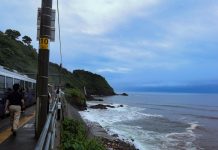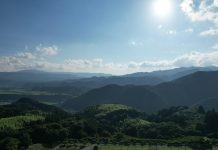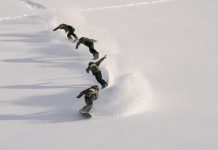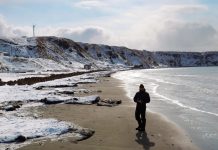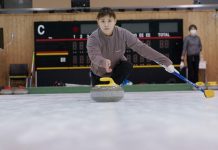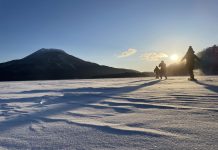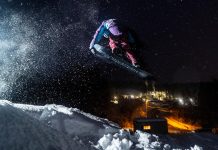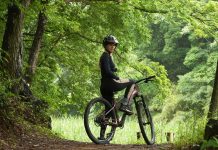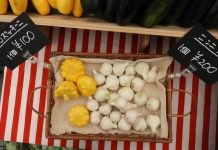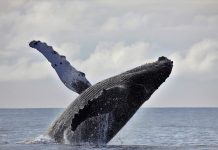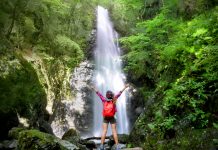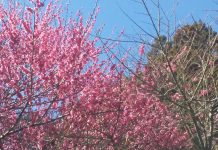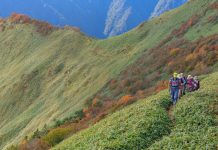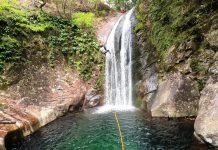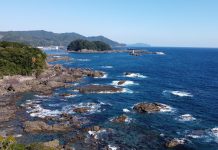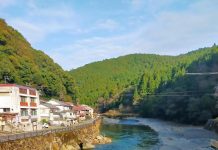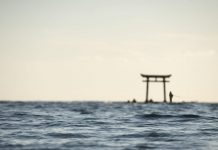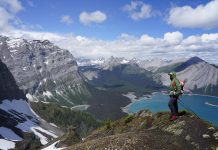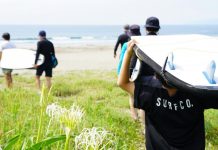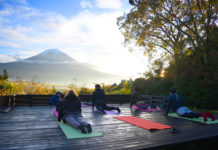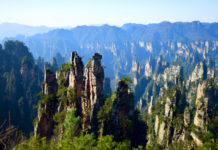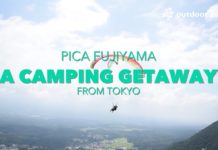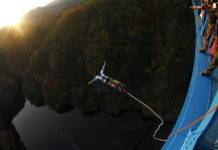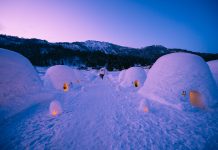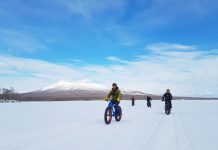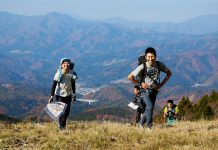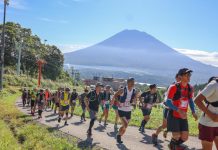When I was asked to go to Miyakejima, I didn’t know anything about the island. I didn’t know there was a volcano. I didn’t know there were dolphins. I didn’t even know it was in Tokyo. What I discovered would change the course of my life.
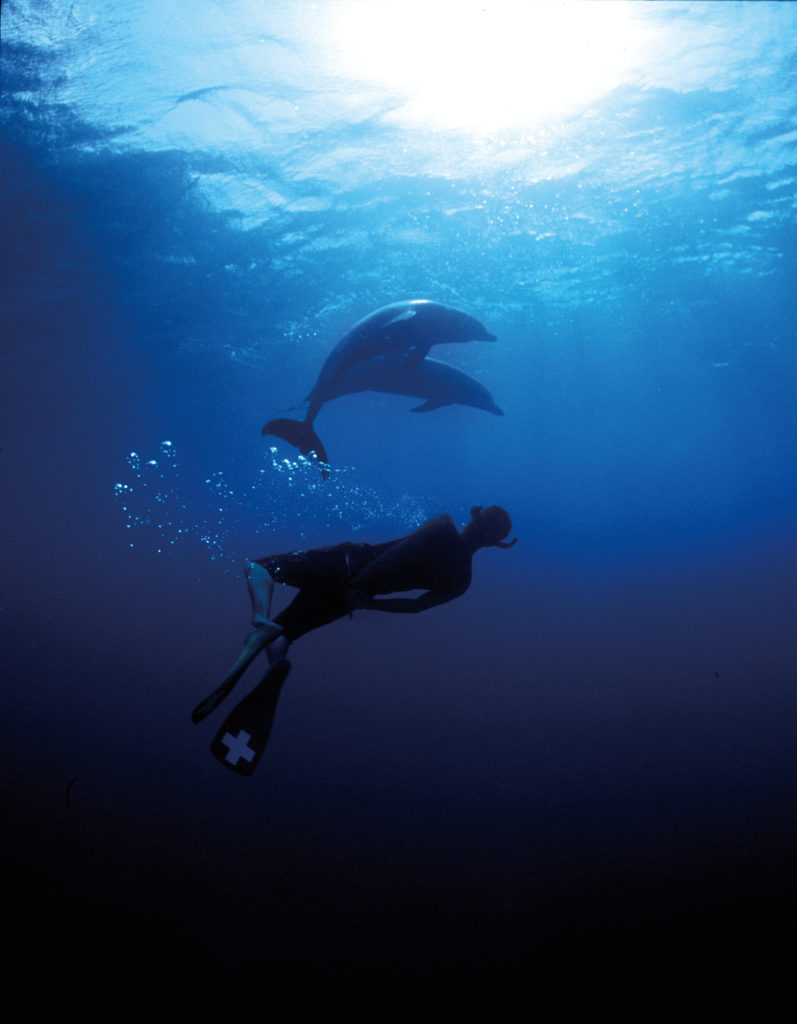
My first visit to Miyakejima was in October of 1996. It was my first year in Japan and I was asked to guide a group of people from my sports club. Like most people, we took the big overnight ferry from Takeshiba Port, near Hamamatsucho, in Tokyo. At 4:30 a.m., the strange chirping of (fake) birds signaled it was time to wake up and get off the boat. The second I did, I fell in love with the island. Miyakejima had a unique aura. Maybe it was the steaming, active volcano or the dense forest still amazingly intact. But, before even getting to the beach, I was already thinking about moving there. Looking back now, it all seemed surreal.
When dove in her deep blue waters, I found they were warmed by the kuroshio (black current), which carries nutrients and warmth from the south. The underwater life and great visibility reminded me of my hometown of Rio de Janeiro, Brazil.
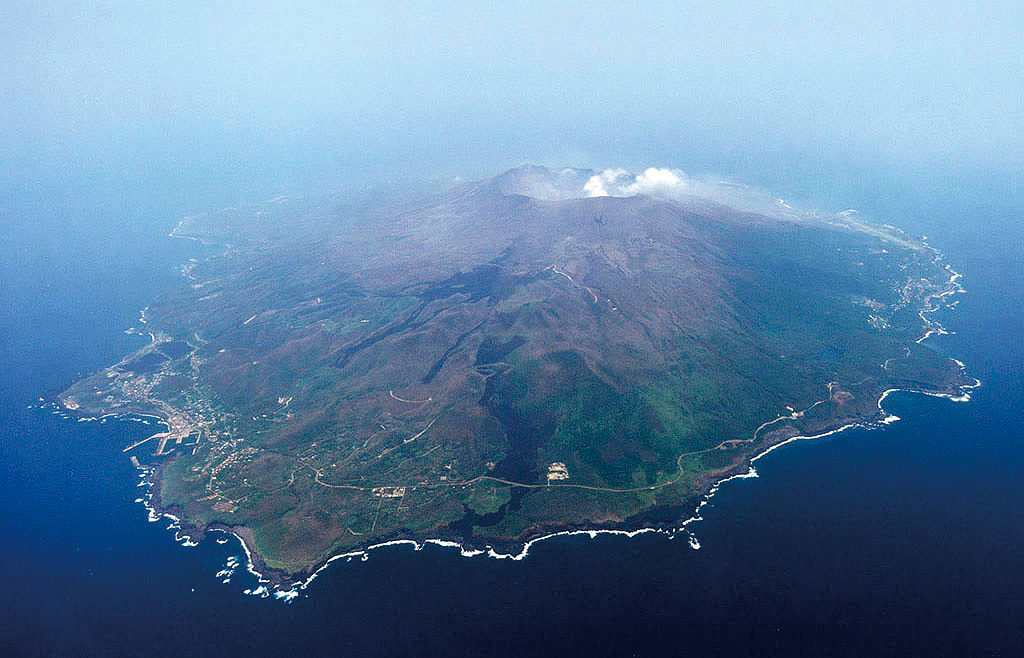
Even though it was October, when people are still wearing jackets and scarves in Tokyo, we were diving in swim trunks with just a rash guard. It was great. After a quick swim and snorkel, we were dropped off in front of a fishing boat. Ten minutes later, we where sailing south toward the rock-like island of Mikurajima where we were told there were dolphins.
I really didn’t know what to expect, and there wasn’t much explanation from the guide, but soon we were wearing masks and flippers then, all of a sudden, a guide started screaming “Haite iiyo, haite iiyo!” (Jump in, jump in!) We were nearly two kilometers from the coast of Mikurajima and 18 kilometers from Miyakejima—in the open ocean. People started jumping off the boat.
Not wanting to be the last one in the water, I dove in. I couldn’t help but thinking what I’d do if something went wrong. Swimming back to Miyakejima wasn’t an option because of rough seas, strong current and the distance. I could swim to Mikurajima but the island looked like a big rock, and I couldn’t see any signs of civilization.
I was floating in the middle of the ocean considering this when something large swam right in front of me. I couldn’t focus on anything other than the fact it was huge. Then I caught a glimpse of a four-meter long bottlenose dolphin checking me out…and I was scared.
After 30 minutes, I still couldn’t believe my eyes. I wasn’t afraid; I was hooked. I would swim up to the boat, get in for a couple minutes, and then jump in again. I was almost faint from exhaustion, but couldn’t stop as long as the dolphins were still hanging around. Over and over I’d leap in and try to hold my breath longer so I could spend more time underwater with these amazing creatures.
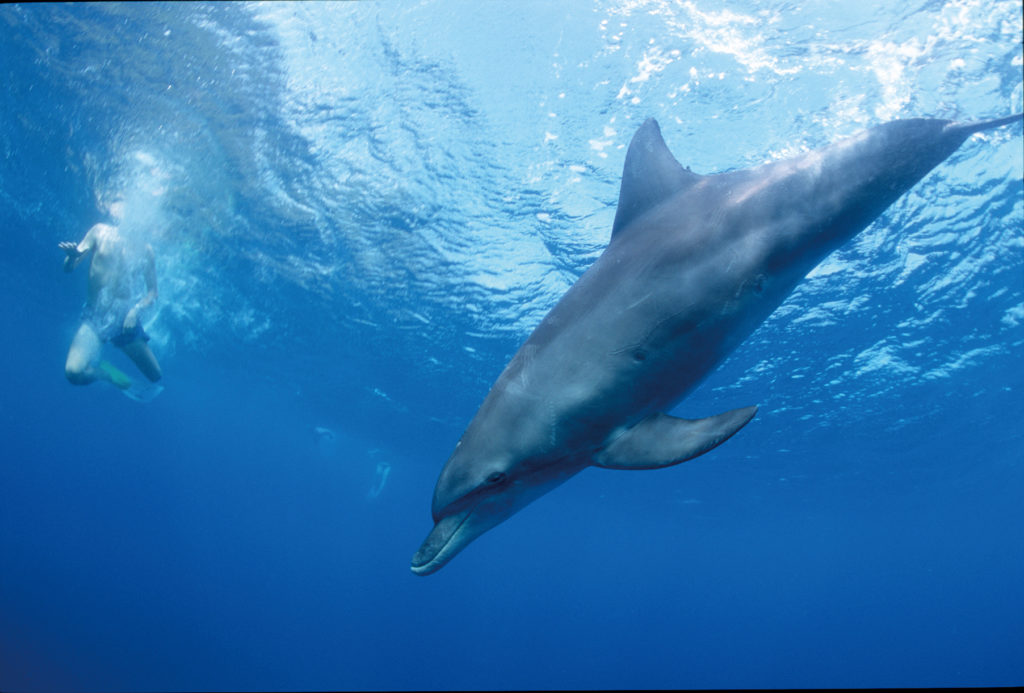
Diving in with both feet
It turned out to be a life-changing event. By March of the following year, just four months after my first swim, I was an official resident of Miyakejima. I started working as a dolphin tour guide and diving instructor for a local company called Marine Base.
In addition to a lush forest surrounded by a beautiful ocean, Miyakejima also had a warm-hearted community. I didn’t feel like a foreigner, in fact I think most of the oba-chan (old ladies) thought I was a local, since I already spoke Japanese fairly fluently.
One of my goals was to help make the dolphin tours safer and more controlled. During my first season, we took, on average, 15 customers per boat – sometimes 30. Each tour included the boat captain and the guide (me). The captain was in charge of the boat, navigation and everyone while they were on the boat. The second they where in the water, however, they were my responsibility.
There were no requirements for joining the tours, and it quickly became evident most Japanese customers didn’t know how to swim. I realized I was more of a lifeguard than a tour guide.
After countless “issues,” we had a meeting to discuss controlling the number of people in each boat as well as limit the number of boats in the water to minimize the stress to the dolphins. The result was a more dolphin-human friendly operation.
Marine Base was by far the biggest dolphin tour company on the island in those days. Even though we didn’t have our own boats, each season we were taking 10,000 people swimming with wild dolphins. The operation got bigger and bigger, and the fisherman who normally didn’t have a lot of income in the summer, became more interested in the dolphin tours.
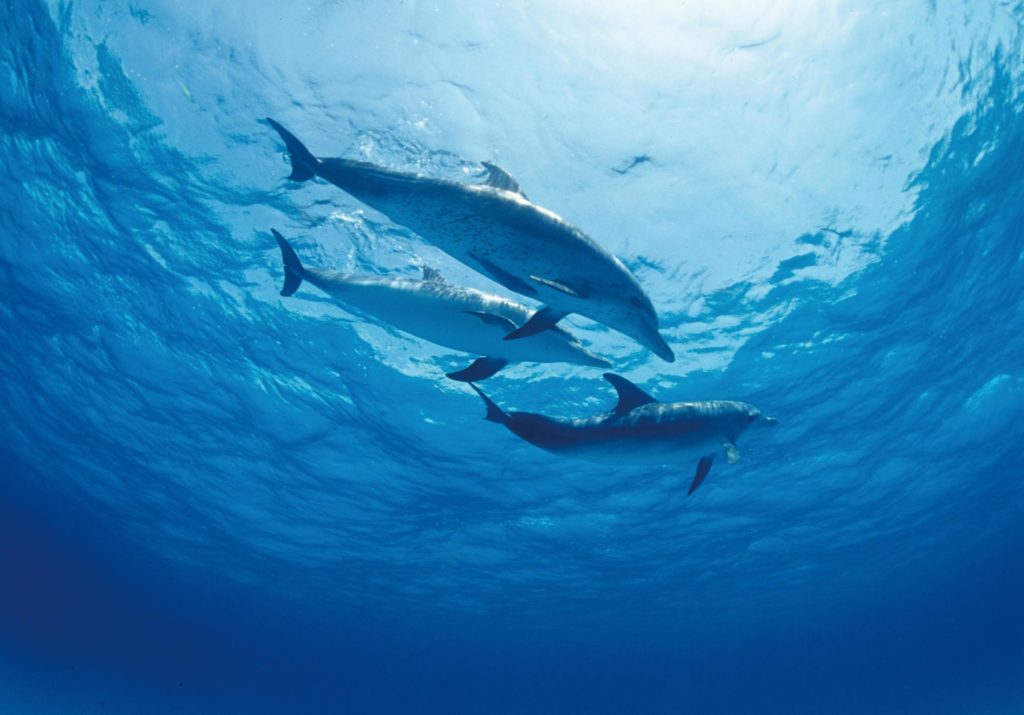
Up in smoke (and ash)
As dolphin eco-tourism increased, Marine Base also grew. In 1999, the owner of the company opened a new public onsen, several minshuku were built, and Marine Base bought its first full-size, 25-person motorboat.
There were big expectations on the island for the 2000 season. Miyakejima seemed to be attracting more attention, companies were hiring more staff and young people were coming back to the island.
But nature has a way of letting us know who’s really in charge and, in June 2000, significant seismic activity was recorded on the island. I was on the ferry back to our office in Tokyo when I got a frantic phone call from one of our staff saying there was an earthquake near where the last volcanic eruption had occurred but they didn’t see any lava flowing out of the crater.
Although some people thought the devices measuring the activity had simply malfunctioned, many of the older residents started packing their things and readying for an evacuation. I took the ferry back to Miyakejima that night and, although things seemed outwardly normal, there was something different in the air.
Several earthquakes followed. Day turned to night as dark ash descended down one side of the island. Ash rain came down next making a concrete slush that, together with fallen trees near the top of the volcano, created a solid mixture clearing everything in its path, including some cars. People such as me near the top of the island were forced to come down using whatever means possible.
I tried my pickup truck, but the ash and water was too slippery. The road was like a big slalom course so, after ditching the truck, I tried paddling down in one of my kayaks. That didn’t work either, so I went back to basics. I swam, grabbed onto whatever I could and drifted all the way down to the ocean. I then swam to the beach and made it to the evacuation area where I joined everyone else.
It was pretty chaotic during the week of that first big eruption. Then came the calm after the storm. We had to get rid of all the ash on roofs, inside houses, on the streets… It looked as if we were cleaning up after the first big snowfall. Except it was black, heavy and didn’t melt. It was everywhere.
Since it felt as if the volcano was settling down again, we thought the worst had passed. Tour operations stopped and everything needed repairs so we decided to cut the season short. Our place near Marine Base was unlivable, so we rented a house on the opposite side of the island.
Everything seemed to be under control so I took a break and went to Thailand to regroup. No phones and no email. Just rock climbing, kayaking and detoxing. I checked my e-mail a week later and got the news. Miyakejima had been completely evacuated. Everyone was given two days to pack up and get off the island. I realized I had just lost everything I had.
It was hard to get details since there was very little about it in the news. I was told a poisonous gas came out of the crater so the government issued a mandatory evacuation notice. I had left for Thailand in beach sandals, shorts, a T-shirt, a small underwater camera and very little else. Everything else I had was back on the island.
I had been collecting gear to pursue my dream of becoming a professional underwater photographer, and was starting to get regularly published. All my camera equipment was now most likely under a lot of ash and mud.
When I got back to Tokyo the Evacuation Office gave me a TV and a washing machine and relocated me to some place I had never heard of. Instead, I crashed at some friend’s house and dreamed of the day I could get back to Miyakejima.
The long way home
The news was saying it would take months; some said just weeks, but nobody really knew anything. It was October when we were finally told it would take years to get us back to the island. Instead of sitting in Tokyo, I decided to go back to college in the USA and study.
America was great, but I couldn’t forget about the people in Miyakejima and the dolphins. In 2002, just before graduating I was hired for a month-long project by an underwater research and construction company. I didn’t think I’d be heading back to Japan any time soon, but they hired me full-time and then told me we’d be doing a survey in Japan.
Since returning, I thought often about visiting Miyakejima to see how it looked. To quench my thirst for some free diving and playtime with the dolphins, I took some friends to neighboring Mikurajima to swim with the dolphins. Although the dolphins were great, it was heartbreaking to be able to see Miyakejima in the distance billowing smoke and not being able to go there.
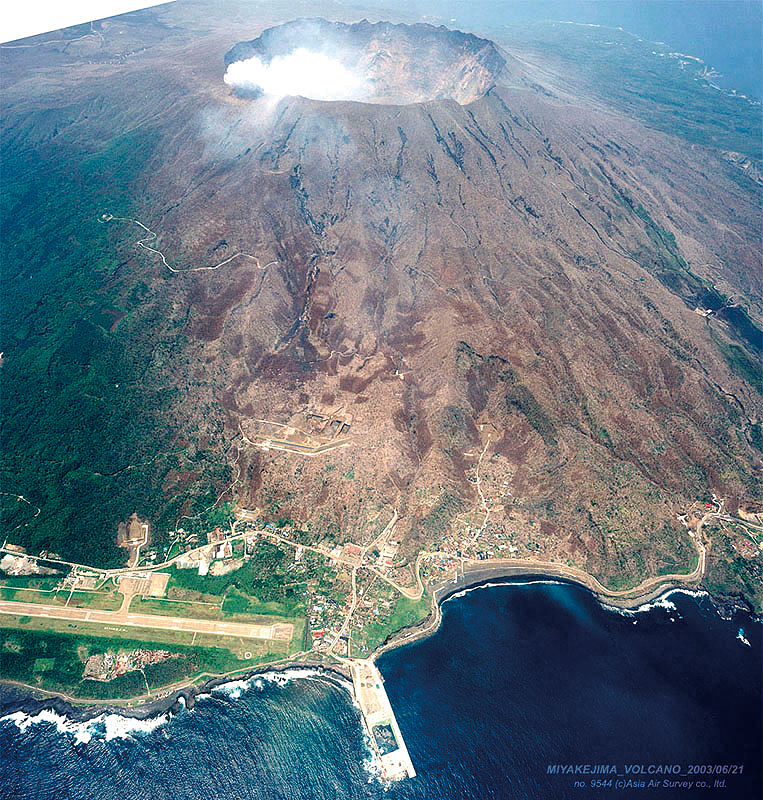
In 2005, people were finally allowed to go back. My friend Minoru moved back right away to fix his parents’ house and my girlfriend Yuri and I decided to go there and give him a hand. It was winter, and the waves were huge as always, but she loved how the island seemed so alive. Minoru looked a lot younger and happier now that he was back on Miyakejima. Little by little people others started coming back as well.
I returned to where I used to live to see if some of my stuff was still buried there, but nothing remained. Even my truck had disintegrated from the volcano’s acid rain. Bare trees standing upright like chopsticks dotted the landscape.
I continue to return to Miyakejima a few times a year until I can move back. Yuri and I invite friends to come enjoy swimming with wild dolphins and experience the new beginning of the island. We’re hopeful companies such as Marine Base and Minoru’s craft shop will flourish again amidst the enchanting lure of Miyakejima.
ESSENTIAL INFO
GETTING THERE
Miyakejima is accessible by overnight ferry operated by Tokai Kisen (www.tokaikisen.co.jp). The ferry departs from Takeshiba Sanbashi Pier, near Hamamatsucho. The trip takes about six hours. Toho Air (www.tohoair.co.jp) has helicopter flights to and from Miyakejima from Oshima and Mikurajima. Flights from Haneda have been suspended since the eruption.
WEB CONNECTION
Miyakejima Tourism Association: www.miyakejima.gr.jp (Japanese only)
Miyakemura: www.miyakemura.com (Japanese only)

